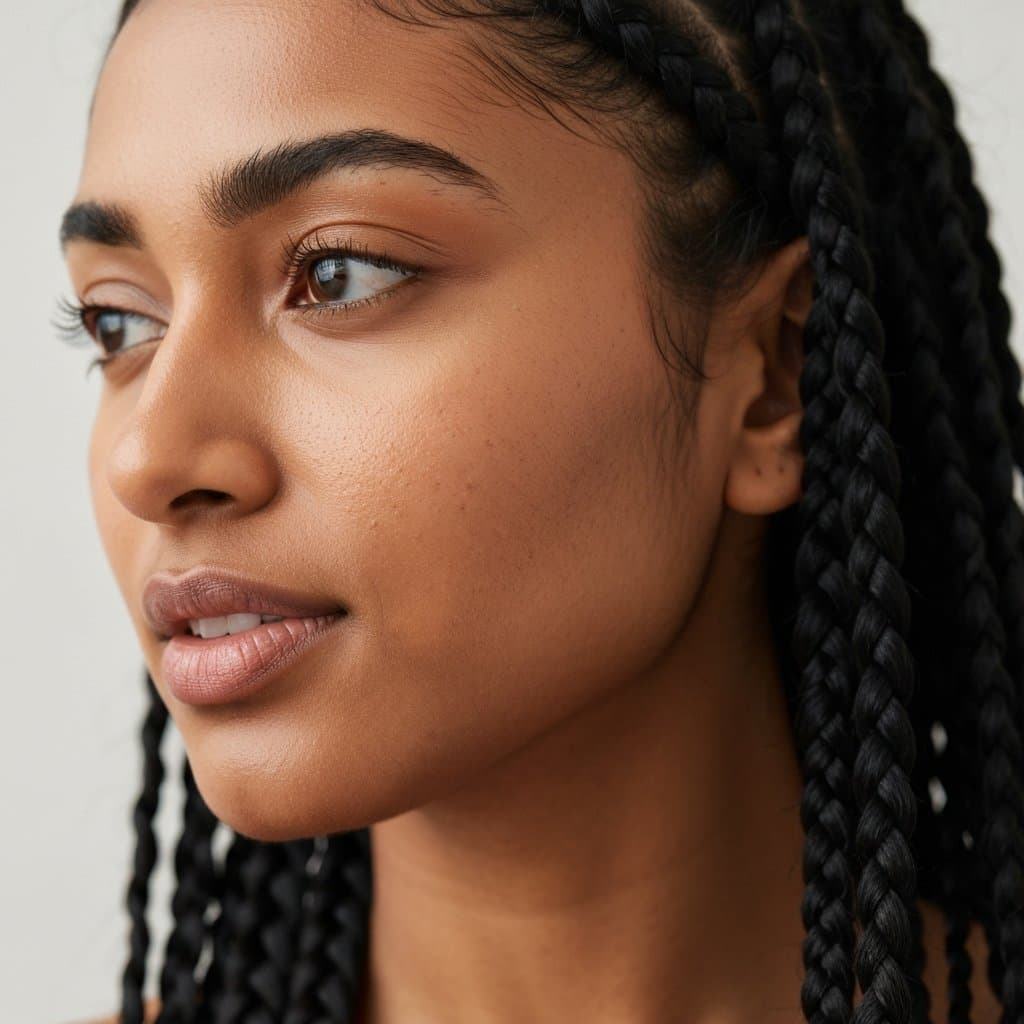The Ultimate Protector: Why Knotless Braids Are Good for Your Hair | A Complete Guide
The Gentle Revolution in Protective Styling: An Introduction to Knotless Braids
In the ever-evolving world of hair care and styling, the quest for styles that are both beautiful and beneficial is constant. For years, braids have been a cornerstone of protective styling, offering a chic way to shield natural hair from daily manipulation and environmental stressors. However, the traditional methods often came with a caveat: tension. The tight knot at the base of a conventional box braid could lead to discomfort, scalp stress, and even hair loss. Enter the game-changer: knotless braids. This innovative technique has surged in popularity, not just for its flawless aesthetic, but for its profound benefits for hair health. So, why are knotless braids so good for your hair? They represent a gentle revolution, a method that prioritizes the integrity of your scalp and strands above all else.
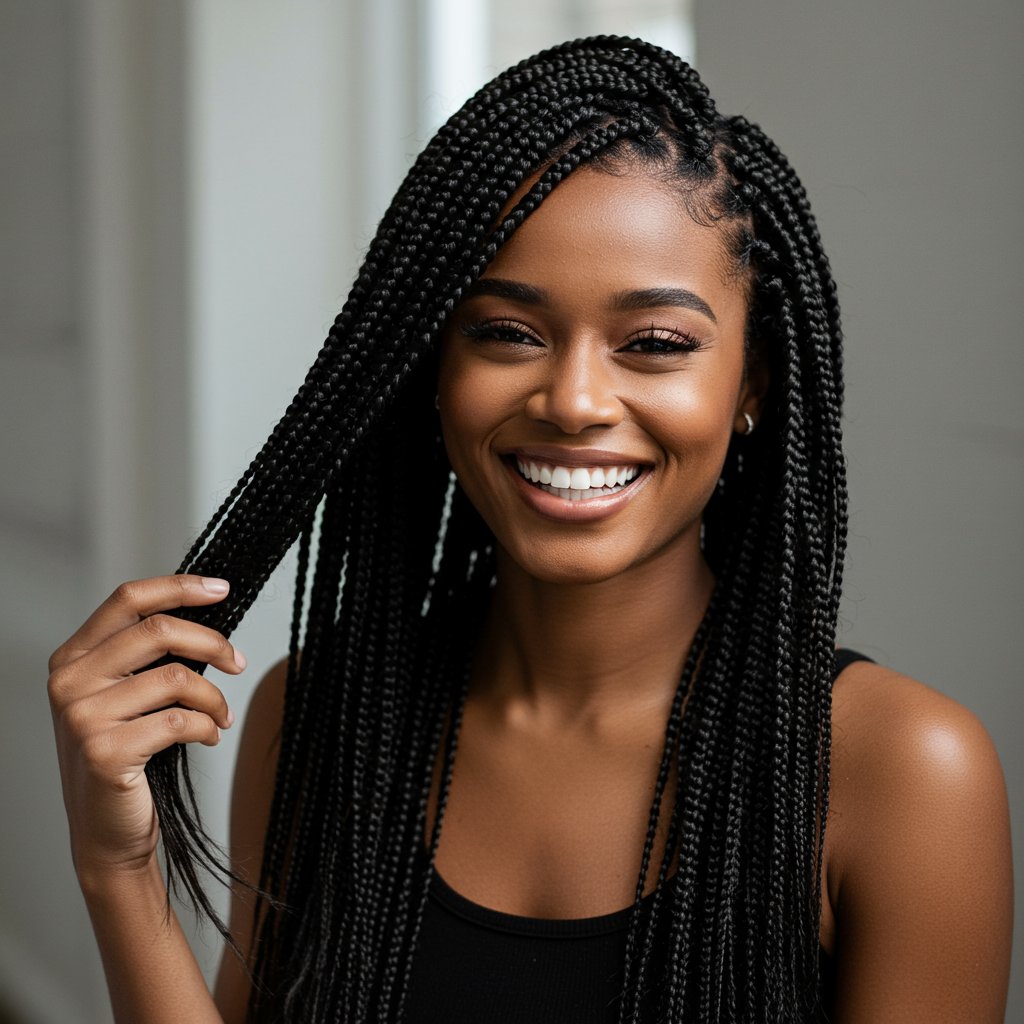
This comprehensive guide will delve deep into the world of knotless braids, exploring why they are considered the ultimate protector for your hair. We'll break down the technique, uncover the science behind their protective qualities, and explain how they can contribute to healthy hair growth. From styling versatility to essential maintenance tips, you'll discover everything you need to know about making this tension-free style your next go-to. If you've been searching for a protective style that doesn't compromise on health, comfort, or elegance, your search ends here. Let's explore the transformative power of knotless braids and why they have rightfully earned their place as a superior choice in modern hair care.
What Exactly Are Knotless Braids? The Feed-In Revolution
The magic of knotless braids lies in their unique installation method. Unlike traditional box braids, which start with a small, tight knot of extension hair anchored to the scalp, knotless braids begin with your own natural hair. The stylist starts by creating a standard three-strand braid with your hair and then gradually and seamlessly feeds small pieces of braiding hair into the braid as they work their way down. This is known as the "feed-in" method. The result is a braid that lies flat against the scalp, creating a smooth, natural-looking transition from root to tip. There is no bulky, noticeable knot, which is the hallmark and primary drawback of their traditional counterparts.
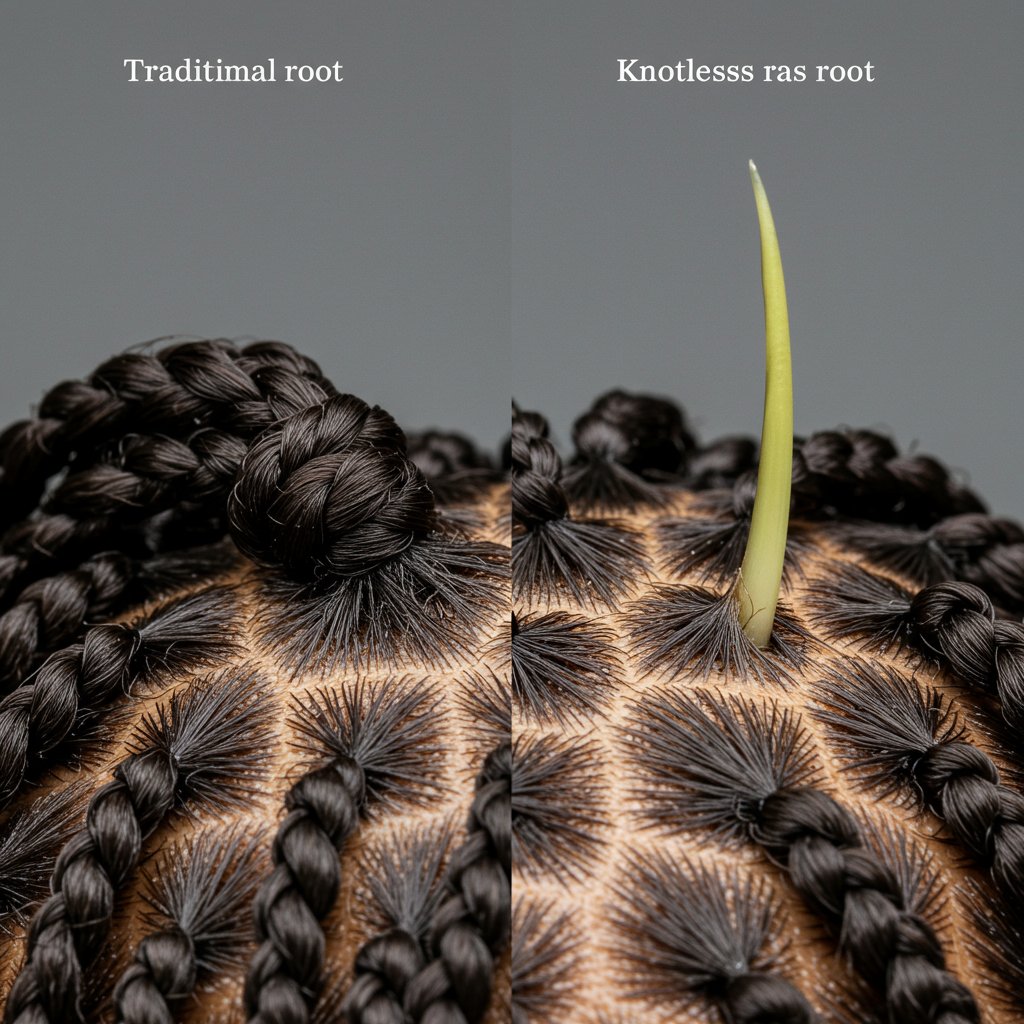
This fundamental difference in application is what makes knotless braids so good for your hair. The absence of an anchor knot eliminates the primary source of tension that can pull on hair follicles. This pulling action is often responsible for the initial pain, headaches, and scalp bumps (folliculitis) associated with new braids. By distributing the weight of the extension hair evenly along the braid rather than concentrating it at the root, the knotless technique significantly reduces stress on the scalp. It’s a thoughtful approach that redefines what a protective style can be: truly protective, not just stylistically convenient.
This revolutionary technique not only enhances comfort but also improves the overall health and appearance of the style. The braids appear as if they are growing directly from the scalp, offering an unparalleled level of realism. This method requires a high degree of skill and precision from the stylist, as the gradual addition of hair must be consistent to create a uniform and secure braid. The artistry involved contributes to a final look that is both lightweight and incredibly versatile, setting a new standard for protective styling excellence.
The Science of Protection: How Knotless Braids Safeguard Your Strands
The term "protective style" implies that the hairstyle should, above all, protect the hair. Knotless braids excel in this regard due to their tension-free application, which has scientifically-backed benefits for hair and scalp health. The most significant advantage is the drastic reduction in the risk of traction alopecia, a form of hair loss caused by constant, repetitive pulling on the hair follicles. Traditional braids, with their tight anchor knots, can exert immense force on the scalp, weakening the follicles over time and leading to permanent hair loss, particularly around the delicate hairline. Knotless braids mitigate this risk by eliminating that initial, forceful pull.
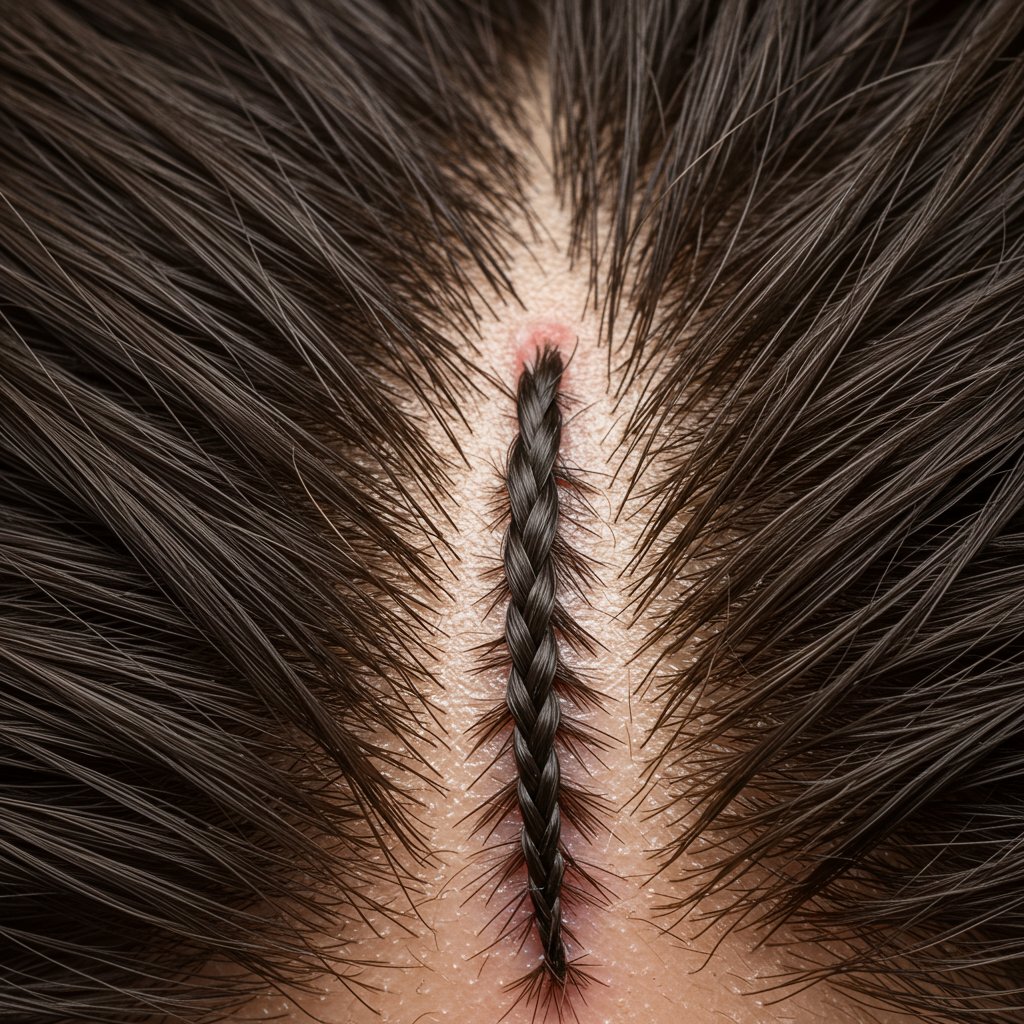
Reduced Tension at the Root
At the follicular level, constant tension can trigger an inflammatory response in the scalp. This inflammation can disrupt the hair growth cycle and damage the follicle's structure. By starting the braid with your natural hair and feeding in extensions gently, knotless braids ensure that the root is not under duress. This allows the follicles to remain in their natural, relaxed state, fostering a healthier environment for hair to grow. This gentle approach is especially crucial for individuals with fine hair, sensitive scalps, or those recovering from previous hair damage.Minimized Breakage and Enhanced Moisture Retention
Beyond preventing hair loss, the knotless method helps minimize breakage. The smooth transition from natural hair to extension hair means there are no sharp angles or tight knots where strands are most likely to snap. Furthermore, once installed, knotless braids effectively seal the hair cuticle, helping to lock in moisture. For individuals with textured or coily hair types, which are naturally prone to dryness, this is a major benefit. The braids act as a physical barrier against environmental factors like sun, wind, and humidity, which can strip hair of its natural oils, allowing your moisturizing products to work more effectively for longer periods.Promoting Healthy Hair Growth: More Than Just a Myth
Many people turn to protective styles with the hope of encouraging hair growth, and with knotless braids, this goal is genuinely attainable. The key principle at play is "low manipulation." When your hair is in braids, you are not combing, brushing, heat-styling, or handling it daily. This period of rest is critical for length retention. Daily styling, no matter how gentle, causes a small amount of wear and tear on the hair shaft, leading to split ends and breakage. By tucking your hair away in knotless braids, you effectively eliminate this daily mechanical stress, allowing your hair to grow undisturbed. What you perceive as rapid growth is often just the retention of length that would have otherwise broken off.
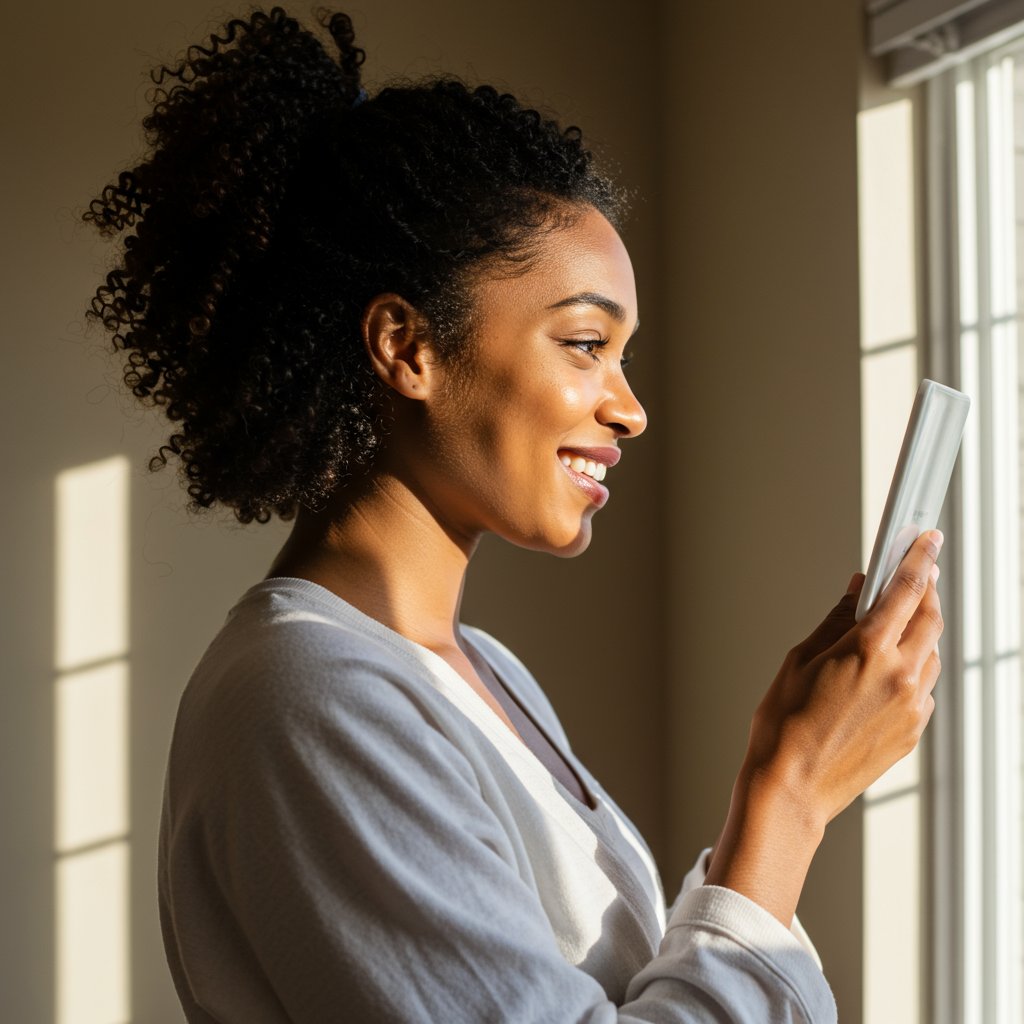
Furthermore, the healthy scalp environment fostered by knotless braids is a direct contributor to optimal hair growth. A scalp that is free from tension, inflammation, and irritation is a scalp where hair follicles can function at their best. The reduced weight and pulling allow for better blood circulation to the follicles, delivering essential nutrients and oxygen needed for the anagen (growth) phase of the hair cycle. When you pair a healthy scalp with a low-manipulation routine, you create the perfect conditions for your hair to thrive. It’s not that the braids themselves possess a magic growth formula; rather, they create the ideal ecosystem for your body's natural hair growth processes to proceed unimpeded.
To maximize these growth-promoting benefits, proper maintenance is key. Keeping the scalp clean, hydrated, and nourished while the braids are in is crucial. Using lightweight scalp oils with ingredients like peppermint or rosemary can further stimulate circulation, while regularly spritzing the braids with a water-based leave-in conditioner will keep the hair inside moisturized and pliable. This holistic approach ensures that when you eventually take the braids down, you reveal hair that is not only longer but also stronger and healthier.
Versatility and Style: The Aesthetic Appeal of Knotless Braids
Beyond their health benefits, knotless braids offer a superior aesthetic and unmatched styling flexibility. One of the most celebrated advantages is their immediate pliability. Traditional box braids are often stiff and rigid for the first few days, making it difficult and uncomfortable to style them in updos. Knotless braids, however, are flexible from the moment you leave the salon chair. Because they lay flat and move with your natural hair, you can sweep them into a high ponytail, a chic bun, or an elegant updo on day one without any pain or scalp tension.
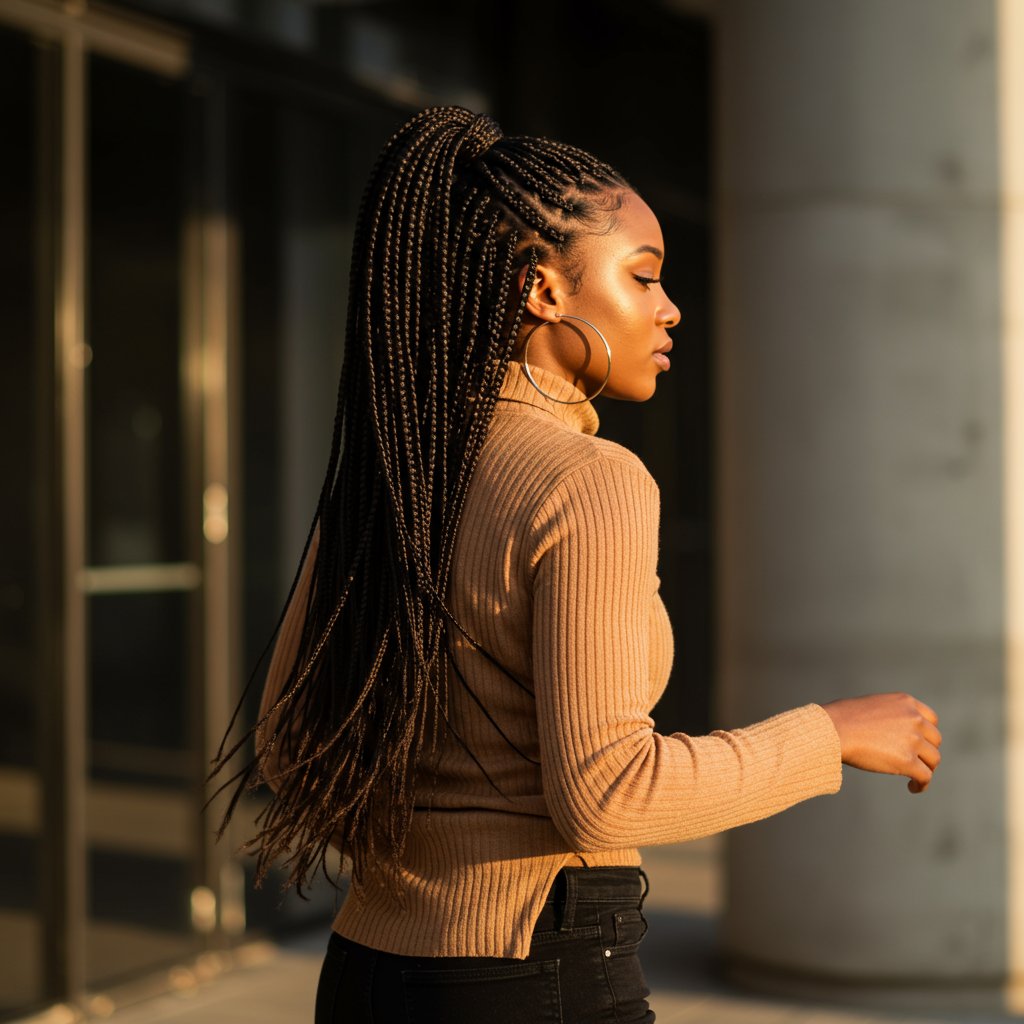
A Spectrum of Sizes and Finishes
This style is incredibly customizable. Whether you prefer super-fine micro braids for a look that mimics loose strands or bold, statement-making jumbo braids, the knotless technique can be adapted to suit your preference. The feed-in method allows for a consistent thickness from root to tip, creating a polished and uniform appearance across all sizes. The seamless start also contributes to a lighter feel. Even with long, thick braids, the overall weight is distributed more evenly, making them more comfortable to wear for extended periods compared to their traditional counterparts.The Natural, Seamless Look
Perhaps the most significant aesthetic advantage is the incredibly natural finish. The absence of a knot at the base means the braids look like they are growing directly out of your scalp. This creates a clean, sleek parting grid and a more sophisticated overall look. This natural appearance makes knotless braids a perfect choice for any occasion, from professional settings to glamorous events. They offer the beauty and intricacy of braids without the tell-tale sign of extensions at the root, providing a look that is effortlessly chic and timeless.The Knotless Braids Experience: What to Expect During and After Installation
Preparing for a knotless braid appointment involves ensuring your hair is in the best possible condition. It's essential to arrive with your hair thoroughly washed, detangled, and stretched (typically via blow-drying on a low heat setting). This creates a clean, smooth canvas for the stylist to work on, ensuring neat parts and a flawless installation. A deep conditioning treatment a few days prior can also help fortify your strands and boost moisture levels.
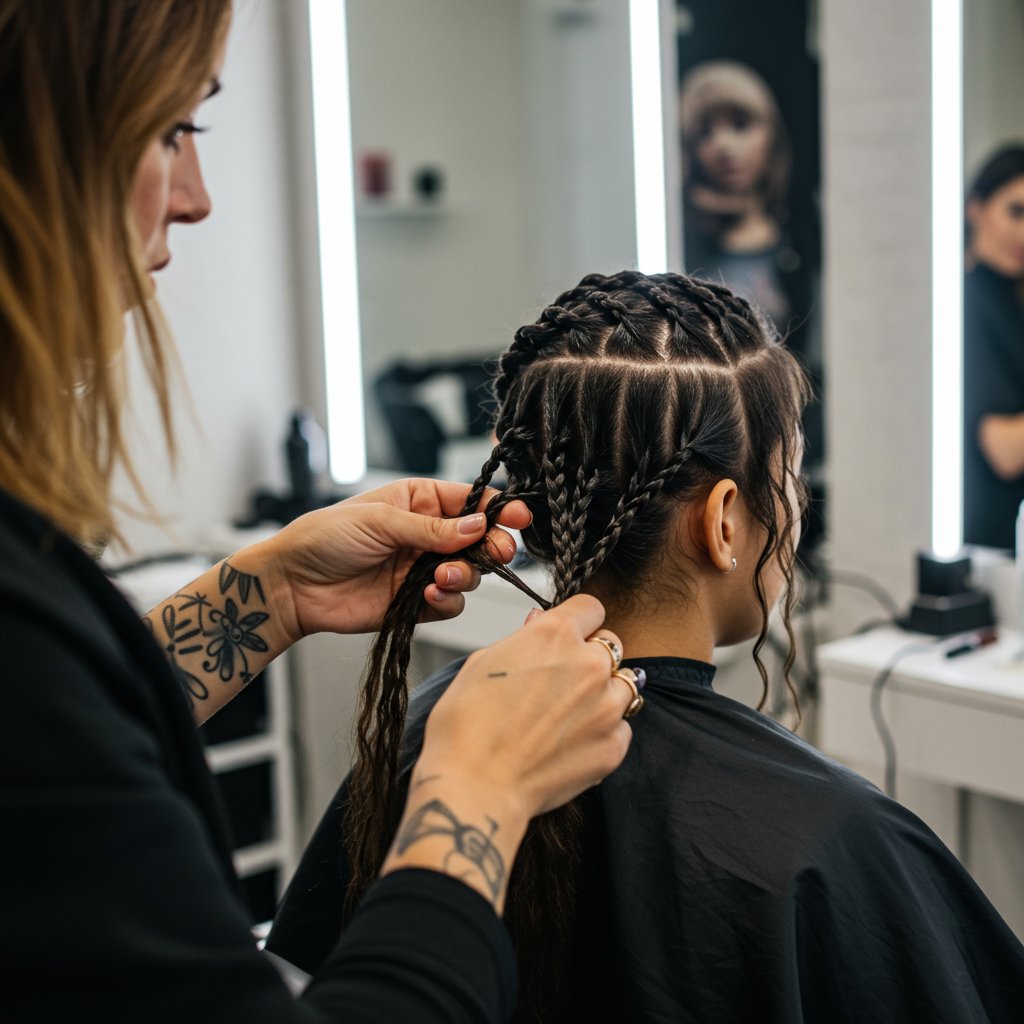
The installation process for knotless braids is typically longer than for traditional box braids. Because the stylist is meticulously feeding in small sections of hair, the process requires more time and precision. Depending on the size and length of the braids, you can expect to be in the salon chair for anywhere from 4 to 9 hours. However, the trade-off for this extra time is a virtually painless experience. Most clients report little to no discomfort during or after the installation, a stark contrast to the soreness often associated with other braiding methods. After the braids are installed, they are typically set with hot water to seal the ends and ensure they hang smoothly. You'll leave the salon with a style that is immediately comfortable, flexible, and ready to be shown off.
Essential Care Tips for Long-Lasting Knotless Braids
To ensure your knotless braids remain beautiful and your hair stays healthy underneath, a consistent maintenance routine is non-negotiable. Proper care can extend the life of your style and maximize its protective benefits. The focus should be on three key areas: scalp health, moisture balance, and nighttime protection.
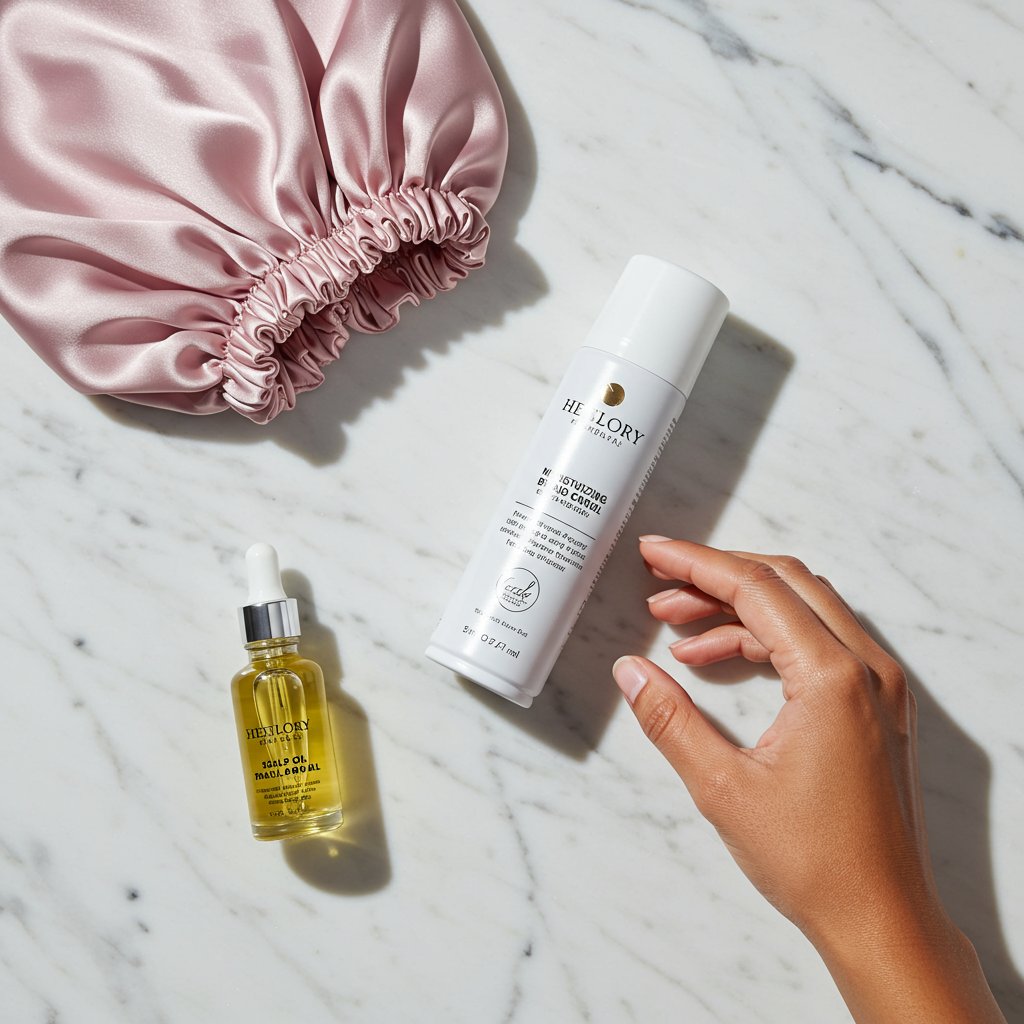
Scalp Cleansing and Health
A clean scalp is the foundation of healthy hair. While you can't shampoo your hair in the traditional sense, you can effectively cleanse your scalp. Use a nozzle-tip applicator bottle to apply a diluted, sulfate-free shampoo or a specialized braid spray directly onto your scalp. Gently massage with the pads of your fingers (not your nails) to lift dirt and product buildup. Rinse thoroughly by letting water run down the length of the braids, then gently squeeze out excess water. It's crucial to ensure your braids are completely dry to prevent mildew and odor; sitting under a hooded dryer or using a blow dryer on a low, cool setting is recommended. Between washes, use a light oil like jojoba or tea tree oil on your scalp to soothe itching and maintain a healthy moisture balance.Moisturizing and Nighttime Protection
Your natural hair, tucked away inside the braids, still needs moisture. Regularly spritz your braids with a lightweight, water-based moisturizing spray or leave-in conditioner. Focus on the length of the braids to ensure the product penetrates to your natural hair. Finally, protect your investment at night. Tying your braids up and covering them with a large silk or satin bonnet or scarf is essential. This reduces friction against your pillowcase, which prevents frizz, flyaways, and moisture loss. A satin pillowcase is also a great alternative or addition. Following these steps will keep your knotless braids looking fresh and ensure your natural hair emerges healthy and hydrated when it's time for a takedown.Knotless Braids vs. Traditional Box Braids: A Head-to-Head Comparison
To truly understand why knotless braids are so good for your hair, a direct comparison with traditional box braids is illuminating. While both are protective styles, their impact on hair and scalp health differs significantly.
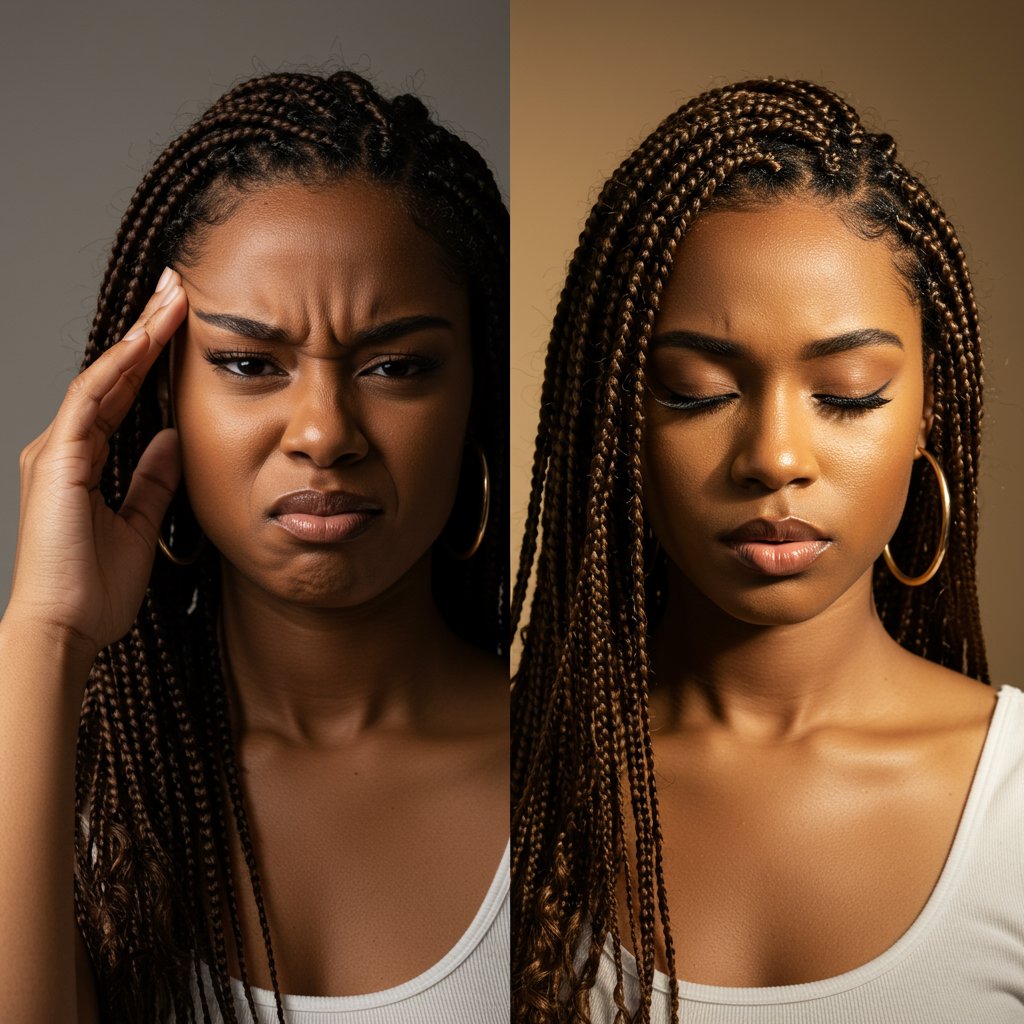
| Feature | Knotless Braids | Traditional Box Braids | |----------------------|-------------------------------------------------------|---------------------------------------------------------| | Tension Level | Very Low: No anchor knot, tension is distributed. | High: Tight anchor knot creates significant tension. | | Pain & Comfort | Minimal to no pain, comfortable from day one. | Often painful for the first few days, risk of bumps. | | Scalp Health | Promotes a healthy scalp, low risk of traction alopecia. | Higher risk of scalp irritation and traction alopecia. | | Appearance | Natural, seamless, lies flat against the scalp. | Noticeable knot at the base, can appear bulky. | | Versatility | Immediately flexible for various styling options. | Stiff initially, limited styling for the first few days. | | Installation Time| Longer (4-9 hours on average). | Shorter (3-6 hours on average). | | Cost | Generally more expensive due to time and skill required. | Typically less expensive. |
This comparison makes it clear that while knotless braids require a greater investment of time and money, the payoff in terms of comfort, scalp health, and aesthetic quality is substantial. They represent a modern, health-conscious approach to a classic style.
Frequently Asked Questions About Knotless Braids
1. How long do knotless braids last?
With proper care, knotless braids can last between 4 to 8 weeks. The longevity depends on your hair's growth rate and your maintenance routine. It's generally not recommended to leave them in for longer than 8 weeks to prevent matting at the roots and to give your natural hair a break.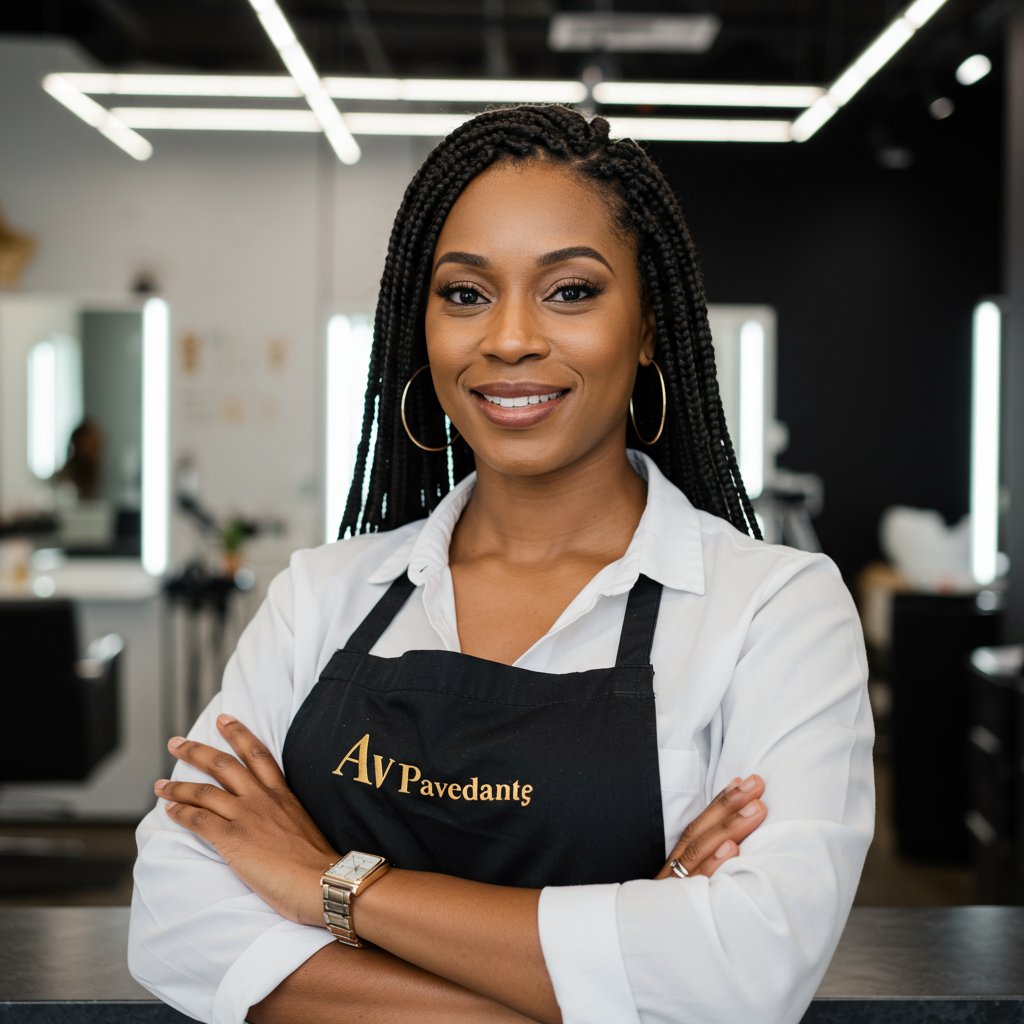
2. Are knotless braids genuinely damage-free?
When installed and maintained correctly by a professional, knotless braids are one of the least damaging protective styles available. The primary risk of damage comes from leaving them in for too long, improper takedown, or neglecting scalp and hair care. The technique itself is designed to be gentle and tension-free.3. Can I get knotless braids with fine or thin hair?
Yes, knotless braids are an excellent option for those with fine or thin hair. Because they don't have a heavy knot at the base and distribute weight evenly, they put far less stress on delicate strands. It's important to choose a size (like small or micro) that is appropriate for your hair density and consult with an experienced stylist.4. How do I wash my hair with knotless braids?
Focus on cleansing the scalp. Dilute a sulfate-free shampoo with water in an applicator bottle and apply it directly to your scalp. Massage gently with your fingertips, then let the water run through the braids to rinse. Follow up with a light, diluted conditioner if needed. Always ensure the braids are fully dry afterward.5. What is the average cost of knotless braids?
The cost varies widely based on your location, the stylist's experience, and the desired length and size of the braids. Generally, you can expect knotless braids to be more expensive than traditional box braids, often ranging from $175 to $600+, due to the increased time and skill required for installation.6. How should I prepare my hair for a knotless braid appointment?
Arrive with your hair freshly washed, conditioned, detangled, and fully stretched or blow-dried. This ensures your hair is free of products and tangles, allowing the stylist to create clean parts and a smooth installation. Avoid using heavy oils or creams before your appointment.Conclusion: The Clear Choice for Healthy, Stylish Protection
In the world of protective styling, knotless braids have firmly established themselves as more than just a passing trend. They are a testament to the innovation that prioritizes hair health without sacrificing style. By eliminating the tension-inducing knot, this technique offers a comfortable, lightweight, and incredibly versatile alternative to traditional methods. The benefits are clear: a significant reduction in scalp stress, a lower risk of breakage and traction alopecia, and an ideal environment for promoting healthy hair growth and length retention.
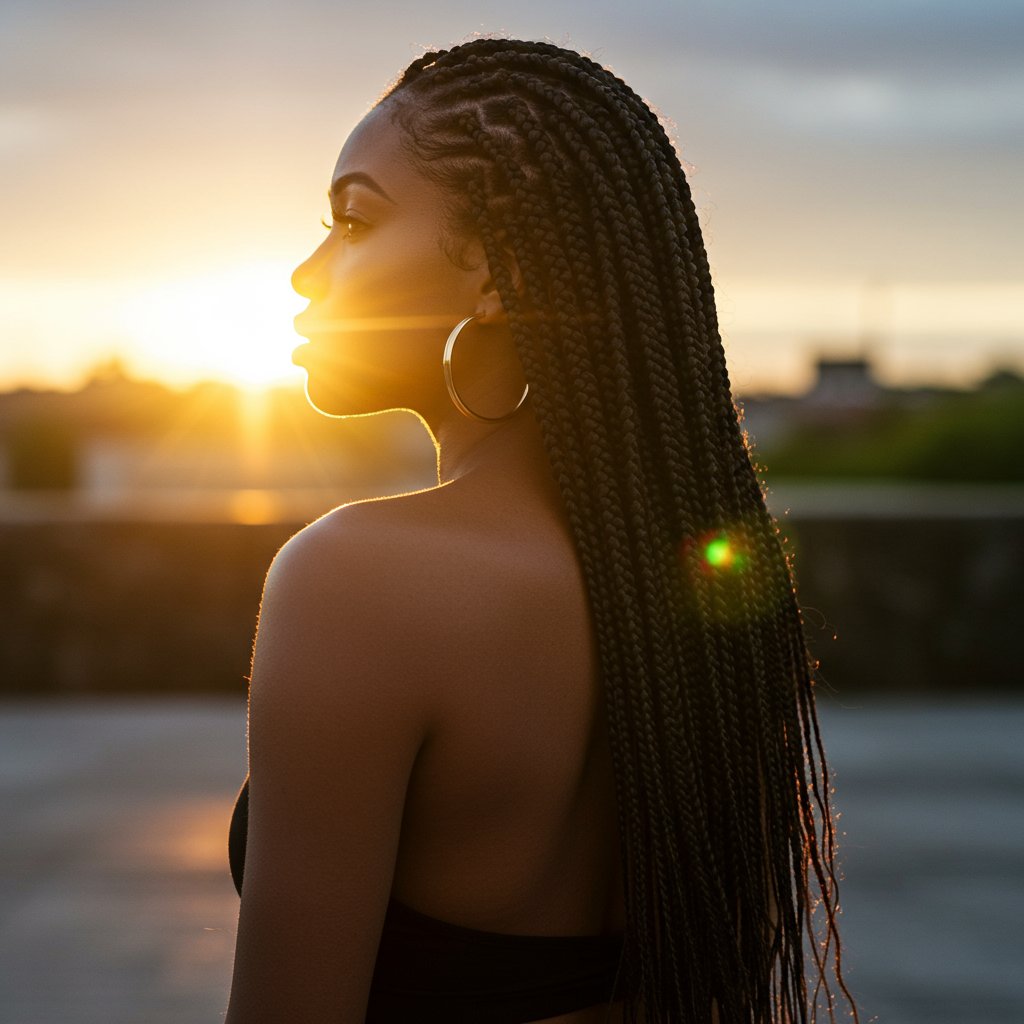
The seamless, natural finish and immediate styling flexibility are simply the beautiful results of a healthier process. While they may require a larger investment of time and money, the long-term rewards for your hair's integrity are invaluable. Choosing knotless braids is choosing to protect your hair in the truest sense of the word. It's a commitment to a gentle, nourishing journey that allows you to enjoy the beauty of braids without compromise. For anyone seeking the ultimate protector for their hair, knotless braids are undeniably the superior choice.

